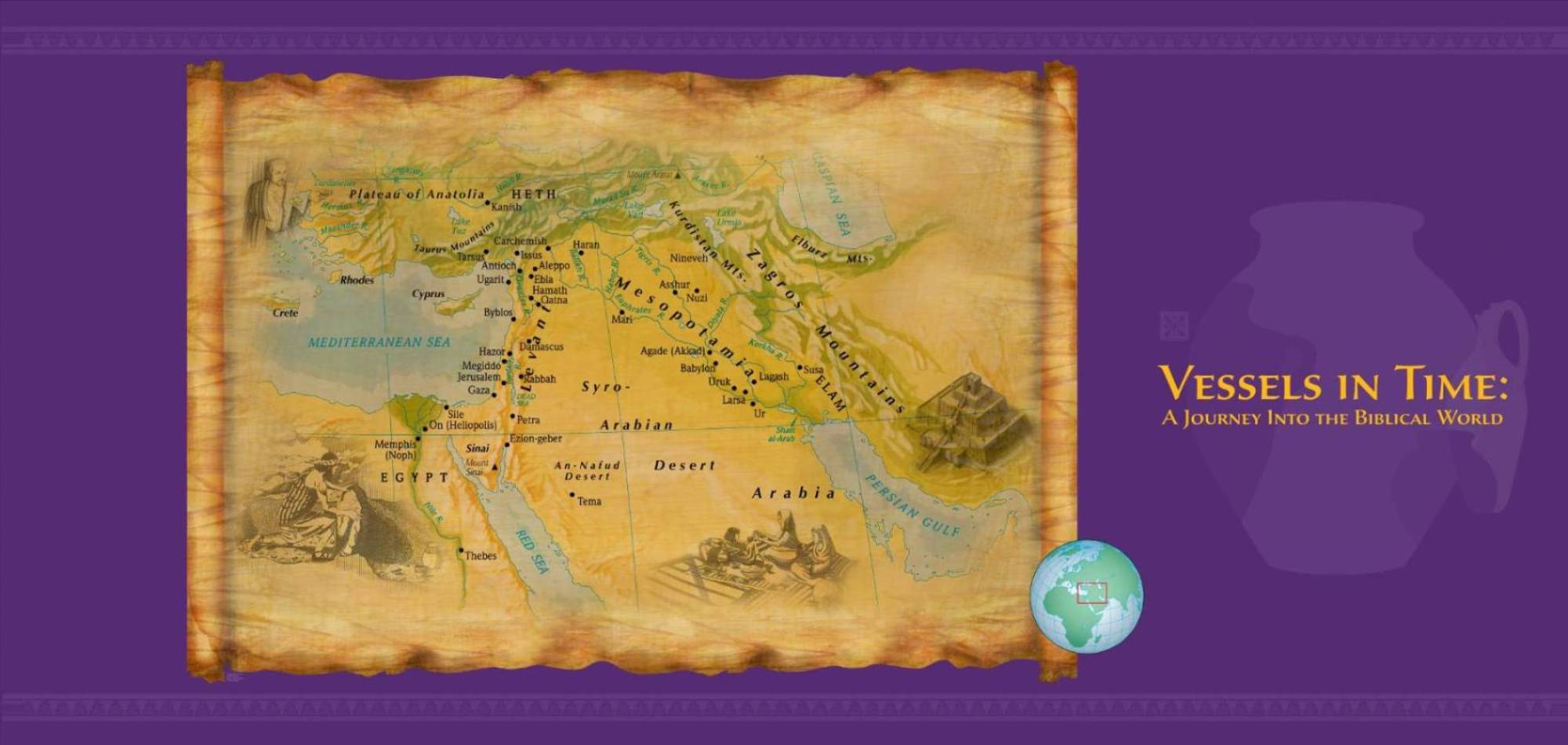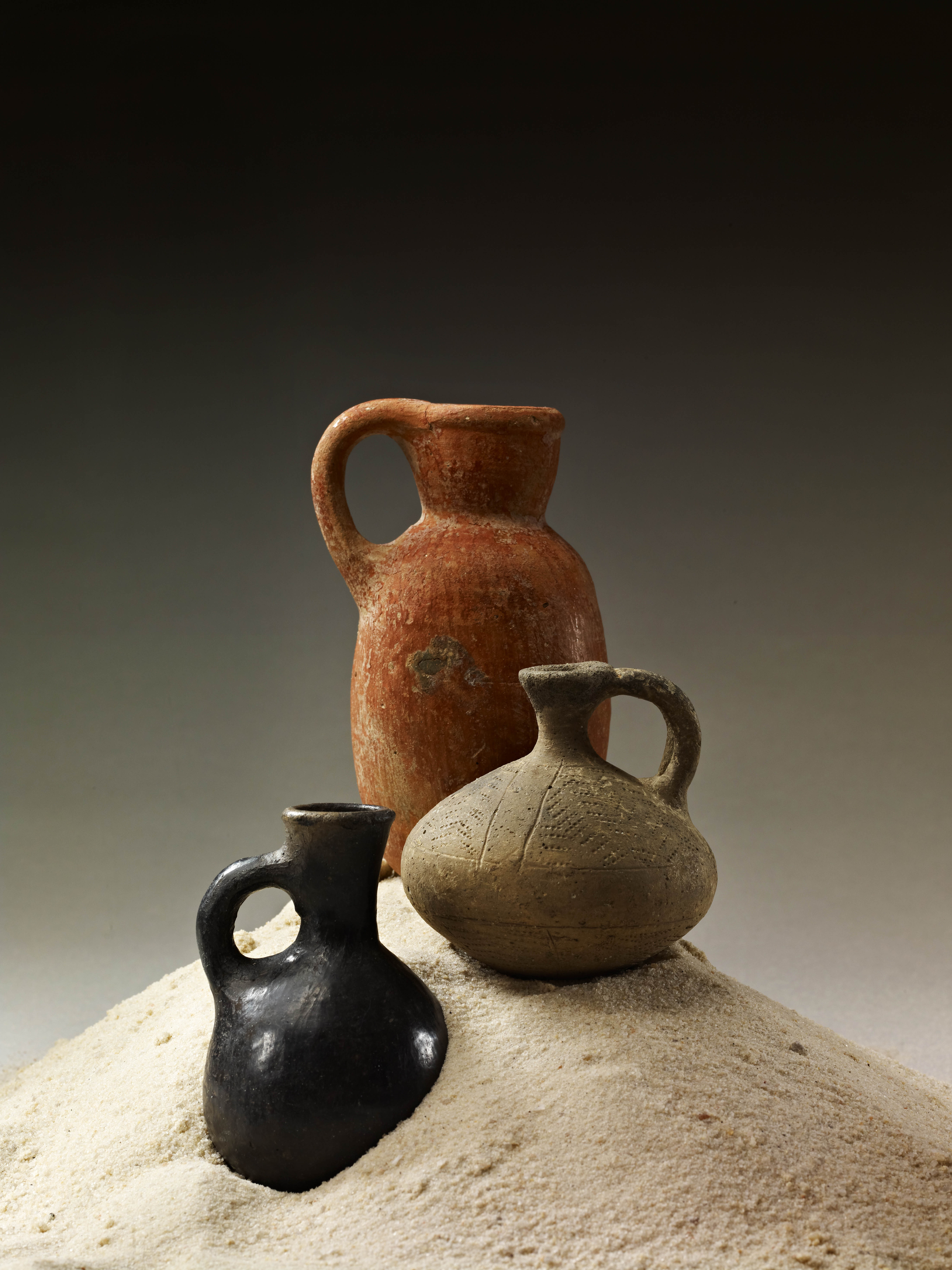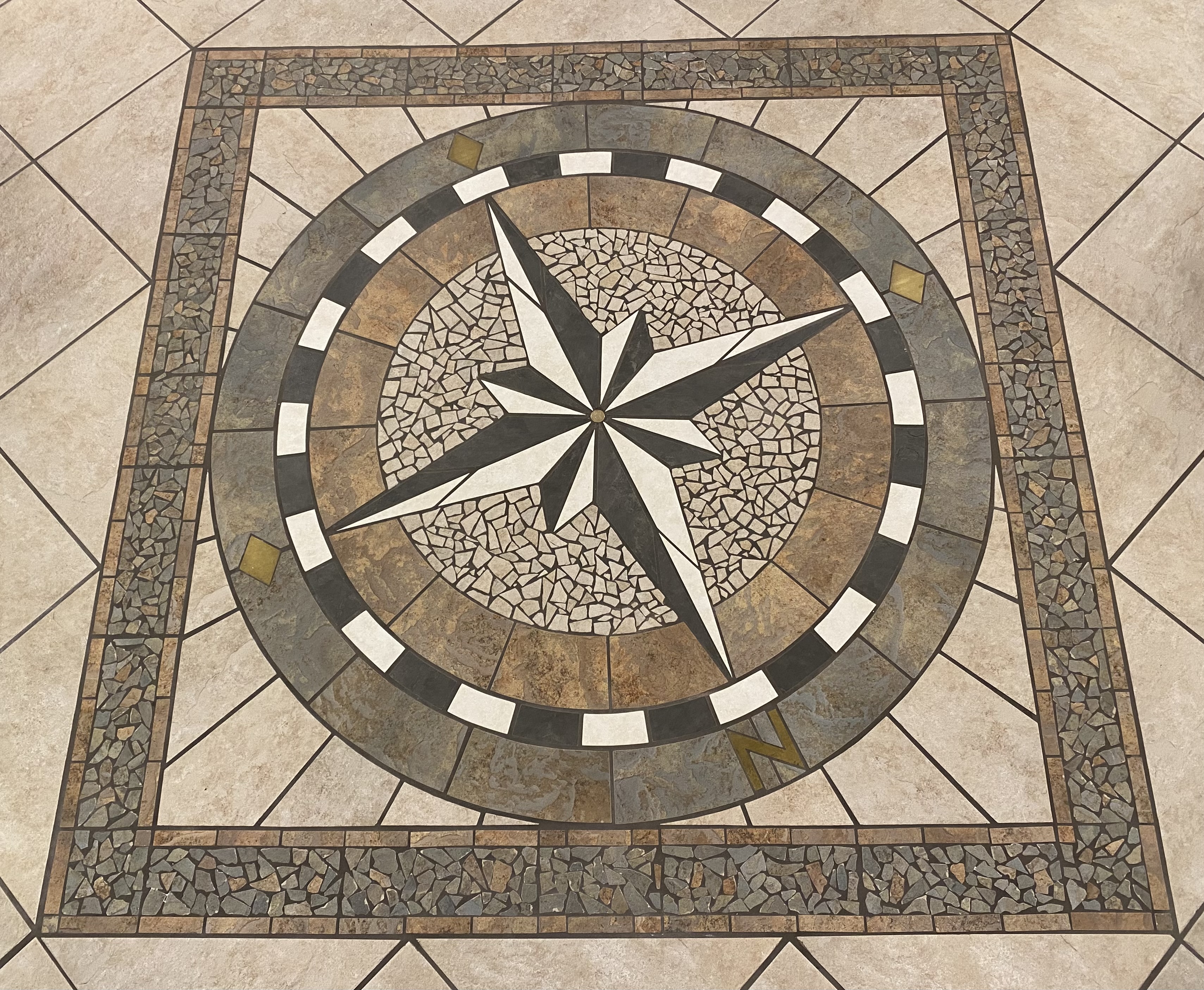
Permanent Exhibit
Introduction

The Lynn H. Wood Archaeological Museum invites you to explore the biblical world,
where ancient ceramic vessels reveal powerful stories. Through these artifacts, we
can journey back to the times of Abraham, David, Deborah, Esther, Nebuchadnezzar,
and Jeremiah—individuals who were also vessels of important messages for future generations.
Archaeology has profoundly brought to life the people, places, and events of biblical
history, allowing us to connect with the past and learn valuable lessons.

As you enter the lobby, a tile compass that indicates true north invites you to experience
these vessels of time as you delve into the biblical world.
The permanent exhibition is organized chronologically, featuring objects that date from the invention of writing and the establishment of the first cities around 3200 B.C. to the Roman Empire during the Byzantine Period, around A.D. 450. This exhibition spans over 3,500 years of history. To facilitate this journey, we have focused on one aspect of ancient life for each period. The theme for each display has been chosen based on a significant characteristic of that era. Together, these themes create a cohesive movement through time while offering glimpses into various aspects of life, illustrated by more than 200 photographs and illustrations. Biblical passages connect these themes to well-known biblical events, emphasizing the authenticity of the biblical narrative.
The permanent exhibition is organized chronologically, featuring objects that date from the invention of writing and the establishment of the first cities around 3200 B.C. to the Roman Empire during the Byzantine Period, around A.D. 450. This exhibition spans over 3,500 years of history. To facilitate this journey, we have focused on one aspect of ancient life for each period. The theme for each display has been chosen based on a significant characteristic of that era. Together, these themes create a cohesive movement through time while offering glimpses into various aspects of life, illustrated by more than 200 photographs and illustrations. Biblical passages connect these themes to well-known biblical events, emphasizing the authenticity of the biblical narrative.
Items from the Permanent Exhibit
Vessels in Time
Click the video to watch more!